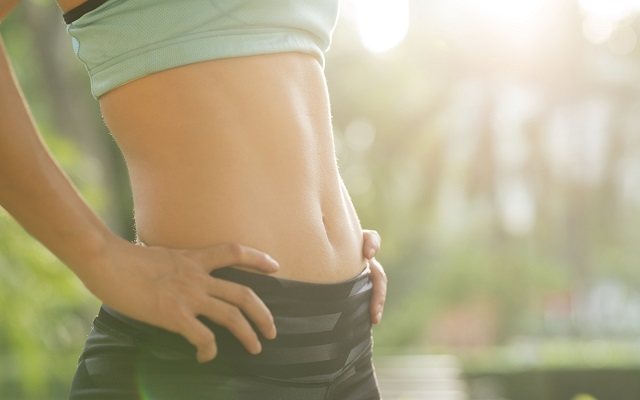Are your sit-ups and crunches actually doing you more harm than good?
These exercises might put too much resistance directly on the lumbar spine. The result is excessive compressive force that could lead to back injuries (1-2). But sports scientists have identified numerous safe and effective alternatives to common abdominal exercises that tighten and tone without harming the back.
Sarah Key, an Australian exercise therapist and author of Back in Action, Back Sufferer’s Bible, and The Body In Action, recommends three safe yet challenging exercises that create well-sculpted abs and also protect, elongate, and massage the spine (3).
Reverse Curl Up
The first exercise is called the “reverse curl up.” When performing this exercise, the abdominal muscles contract and tighten while the back is massaged. The reverse curl up also challenges the abdominals while allowing the vertebrae to pull apart and push back together. This movement leads to greater circulation of disc fluid, fresh nutrients, and waste products while loosening tight back muscles..
To do the reverse curl up, perform the following three steps.
- Find a comfortable flat surface and lie down on your back, with arms placed to the sides of your body and palms facing the floor.
- Raise both legs, in a bent position, towards your face and, by engaging the core, raise your lower body up and off the floor.
- After each movement, allow your legs to slowly float away from your face, keeping the thighs and calves firmly touching one another, and back to the starting bent position.
Perform 25 to 30 reverse curl ups during each exercise session.
Oblique Twist
The second exercise is called the “oblique twist.” This exercise targets the internal obliques, which are part of the lower abdomen. In this exercise, the oblique muscles help twist the torso from side to side. Strong obliques support a strong lower back, ward off back pain, and aid posture. Strong obliques also create a chiseled waistline.
To do this exercise, perform the following four steps:
- Find a flat surface and lie down on your back with arms positioned away from your body at shoulder level, palms facing the floor.
- Bend both legs and pull them into your body with the thighs and calves firmly touching.
- Slowly lower both legs to the right and hover about an inch off the ground before slowly coming back to center.
- Slowly lower both legs, in the same position, to the left, and return, slowly, to center.
Try not to use the shoulder muscles, arms or palms for support or swing the legs from side to side. Ideally, the thighs and calves should remain touching throughout the exercise. Perform 15 to 20 oblique twists after the reverse curl ups .
Legs Passing
The third exercise is called “legs passing.” In this exercise, both legs go up and down, which requires the abdominals to both pull in and push out. This dual action challenges the abdominals and, at the same time, encourages tight back muscles to relax.
To do this exercise, perform the following three steps:
- Find a comfortable flat surface and lie down on your back with knees bent, feet flat on the floor, and the whole of your lower back pressed into the floor.
- While keeping your lower back firmly on the floor, raise one leg towards the face in a slightly bent position.
- Finish the exercise by releasing the leg slowly back to the floor, keeping it partially bent until it reaches the ground. Repeat with the opposite leg.
Perform 15 passes on each side following the oblique twists.
Backing Up Now
Before doing any of these three abdominal exercises, be sure that your head, shoulders and spine remain stationary on the ground. This positioning naturally supports core stability and protects the back. When your lower body creates abdominal tension, as opposed to the upper body, your neck and spine can decompress too.
Try integrating these three abdominal exercises into your fitness routine –because building your mid-section should never compromise the health of your back.
References
- Kravitz L. SuperAbs Resource Manual. Available at: https://www.unm.edu/~lkravitz/Article%20folder/abdominal.html
- Akuthota V et al. Core stability exercise principles. Curr Sports Med Rep. 2008; 7(1): 39-44.
- Key S. 2006. The Body In Action. Crows Nest, Australia: Allen & Unwin.





